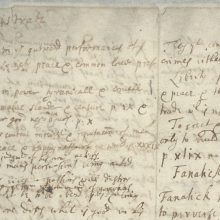
Photo from archive.org
muted—and were reinforced afterwards. The main strength of the book lies in Fara’s vivid picture of women in science in this period. Indeed, the extent of their involvement and achievements… Click to show full abstract
muted—and were reinforced afterwards. The main strength of the book lies in Fara’s vivid picture of women in science in this period. Indeed, the extent of their involvement and achievements might be surprising to many readers. Women’s disadvantages covered much more than access to higher education: even those who succeeded had to overcome many hurdles and prejudices to attain a career in science, and if they did, were often shunted into lesser positions, paid less, and excluded from common rooms and many professional scientific societies. Yet many persisted, and some even achieved highly, especially if mentored or tutored by sympathetic male scientists. From the relatively small number of female scientists came many from the growing number of universities, eager to help the war effort and, indeed, finding unprecedented scientific opportunities. Some filled the posts of absentee male scientists; others fitted into the growing range of scientific and technological research in universities and in naval, radio, and industrial developments. Fara gives many absorbing examples, many of them culled expertly from secondary literature, including the Oxford Dictionary of National Biography. She cites women scientists who took over museums, took up posts or research in chemical and metallurgical industries, academia, counterespionage, and electrical warfare, all supplying crucial work for their country, yet underpaid and treated unequally at the time and largely forgotten afterwards. This was particularly true of the many females in medicine whose immediate offers of service were summarily dismissed by the British War Office until their sterling voluntary endeavors in Europe and on the Eastern front received such glowing reports that in 1915 the War Office willingly utilized their expertise and efficient organization in Britain. Among others, Fara includes the stories of women like the radiographer Helen Gleichen and the radiologist Florence Stoney; the surgeon Louisa Garrett Anderson and her companion, the physician Flora Murray, both formerly militant suffragettes; and of the Scottish hospital units inspired by Dr. Elsie Inglis, which, despite appalling conditions, under women such as the early psychiatrist Dr. Isabel Emslie Hutton, transformed medical care in Serbia and on the Eastern Front. Women scientists also contributed in other ways. For example, Dr. Mona Geddes, a nutritionist, was put in charge of the Women’s Auxiliary Army Corps in Britain in 1917, while Helen Gwynne-Vaughan, a university botanist and specialist in fungi, held the same role in France. These women endured mockery, long hours, low pay, and appalling living conditions but were disregarded once the war over and criticized for masculine ways. Few women scientists enhanced their careers by their war work, however important it was. Meteorologist Margaret Fishenden and pioneering academic Marie Stopes, whose expertise was on plant fossils and mining, were among the rare exceptions. Others did take opportunities hitherto denied them, and undoubtedly women’s war work did change some attitudes. Yet Fara’s analysis of women’s enduring struggles for scientific recognition and more equal treatment add a sobering dimension to this fascinating history. It was realizing the reality of entering science for women in the past and the lessons from this for understanding the present and improving the future that led Fara to write this excellent book. I urge all those interested in a fuller understanding of the past, of women’s part in the war, and in science to read it.
Journal Title: Journal of British Studies
Year Published: 2019
Link to full text (if available)
Share on Social Media: Sign Up to like & get
recommendations!